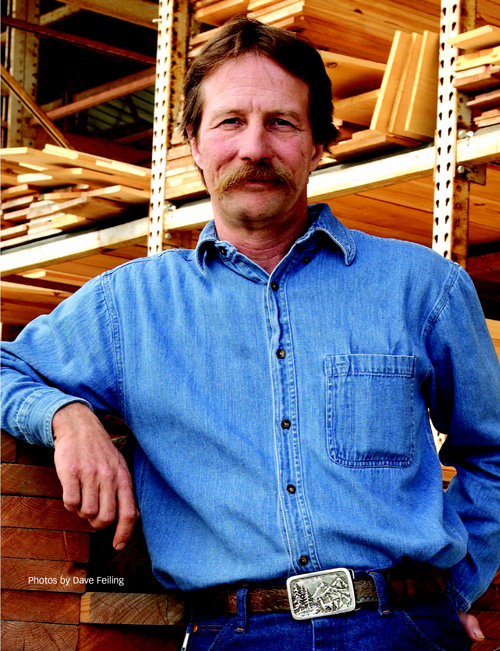Calling All Leaders
Curtis attributes the day-in-day-out customer service success with contractors to a deeper corporate commitment to employee leadership building, an accomplishment that he sees as one of the biggest challenges facing the pro dealer industry today. “It’s difficult to achieve—it takes an awful lot of trust, it takes patience, and it takes an ability to realize that yours is not the only view of how things work,” he says. “And that was a very long road for me, because I grew up in an environment of under-the-thumb management.”
After purchasing the company from his father, Robert, in 1992, Curtis vowed to expunge any “my way or the highway” practices at the company, and unleashed a system of “distributed management,” which allows branch managers and their employees to assume greater leadership positions in the company by giving them a wide berth in daily decision-making and long-term growth strategies.
Neeson, for example, was able to largely author her own facility redesign in 2002 when the Queensbury yard was relocated from what Curtis describes as a “postage-stamp” sized facility in nearby Warren. Included in the package was a state-of-the-art, under-cover drive-through inventory area for lumber and building materials, which has fueled an increase in inventory turns and a corresponding 600 percent increase in annual same-store sales hitting $15 million.
With its own dispatch and A/R departments (other Curtis locations use centralized dispatch and accounting at the Ballston Spa yard), Queensbury is a prototype for future organic growth and yard redesign for the company, and true to Curtis character, Neeson is already looking to secure adjacent property for increased square footage and additional expansion. “We are definitely always moving forward, from getting new accounts to getting new operations, to improving operations,” she says. “Jay is not complacent and we all follow that lead. We don’t try to simply stay up with the times—we try to go beyond them.”
Doug Ford, manager of the Ballston Spa location and a 25-year company veteran, attests that the leadership-building mentality has been a key driving force for the company over the past decade. “As managers, we’re allowed to think on our feet, we are allowed to make changes, and we foster those ideals within our own staffs,” he says. “The product knowledge and industry expertise required of managers and salesmen and yard employees has been increasing tenfold [in recent years]. Day in and day out, our builders rely on that expertise, and you cannot BS your way through it.”
According to Curtis, leadership building confronts the industry-wide pro dealer human resources challenge of finding “good people” head on. “You only hire people into your organization that clearly want to succeed on into the future and can think on their own two feet,” he says. “When you set up an environment that rewards creative thinking and working with others to achieve results, you are also fostering a system where you don’t have to spend a lot of time firing people—the square pegs very quickly find out they are not going to fit into a round hole.”
Setting Examples
Fitting into the non-complacent culture at Curtis Lumber also requires a commitment to carrying the company’s leadership principles forward into a larger industry arena. Curtis continues to invest in national and regional associations and education groups. In addition to proactive participation in past PROSALES Industry Summit conferences and Lumbermens Merchandising Corp. committees, Curtis staff members are perennial holders of various leadership slots at the Rensselaer, N.Y.–based Northeastern Retail Lumber Association (NRLA), a regional affiliate of the National Lumber and Building Material Dealers Association. Most recently, company vice president of retail operations Jon Hallgren served on the 2003–2004 NRLA executive board while director of purchasing, marketing, and advertising John Kirk held the NRLA’s 2003–2004 post of state president for eastern New York.
Buying group and association commitments notwithstanding, it is in the area of occupational safety and health where Curtis Lumber truly shines as a benchmark for the LBM industry and Corporate America as a whole. While workplace safety has gained ground in recent years as a strategy for offsetting rising insurance costs and fostering employee-friendly cultures, Curtis Lumber has been among a handful of corporate leaders nationwide that have maintained a historic track record of embracing partnerships with state and federal occupational safety and health agencies.
“We’ve been working on safety for 15 years,” says Curtis. “That investment puts us so far ahead of the industry curve in terms of OSHA [liability] and workers’ comp [costs], but more importantly it ensures a protective environment for both our employees and customers that goes beyond just complying with the law.” Since 1989, Curtis has been participating in New York state’s Safety and Health Recognition Program (SHARP) and OSHA’s Voluntary Protection Program (VPP), both of which recognize employers that operate exemplary safety and health management systems as a model for worksite safety and health among their business peers.
In 2000, the company received a national award from U.S. assistant secretary of labor John Henshaw for the company’s ongoing commitment to occupational safety and health, and OSHA continues to applaud Curtis Lumber as a national model for the safe workplace. “By taking advantage of the various cooperative programs that OSHA offers, Curtis has become a prime example of a safety and health success story,” says Paula White, director of Cooperative and State Programs for OSHA. “Better yet, Curtis is giving back to OSHA by advocating for safety and health excellence among small businesses in the Upstate New York region. We at OSHA are immensely proud to call Curtis Lumber management and employees our partners.”
Indeed, not content to merely lead by example, Curtis Lumber is keeping the safety ball rolling by becoming a pilot member of OSHA Challenge, a safety and health mentoring program launched by the agency in May 2004 that lets other Albany-area companies interested in the VPP process attend meetings at Curtis locations, tour facilities, and receive assistance and advice concerning establishing a successful VPP program.



